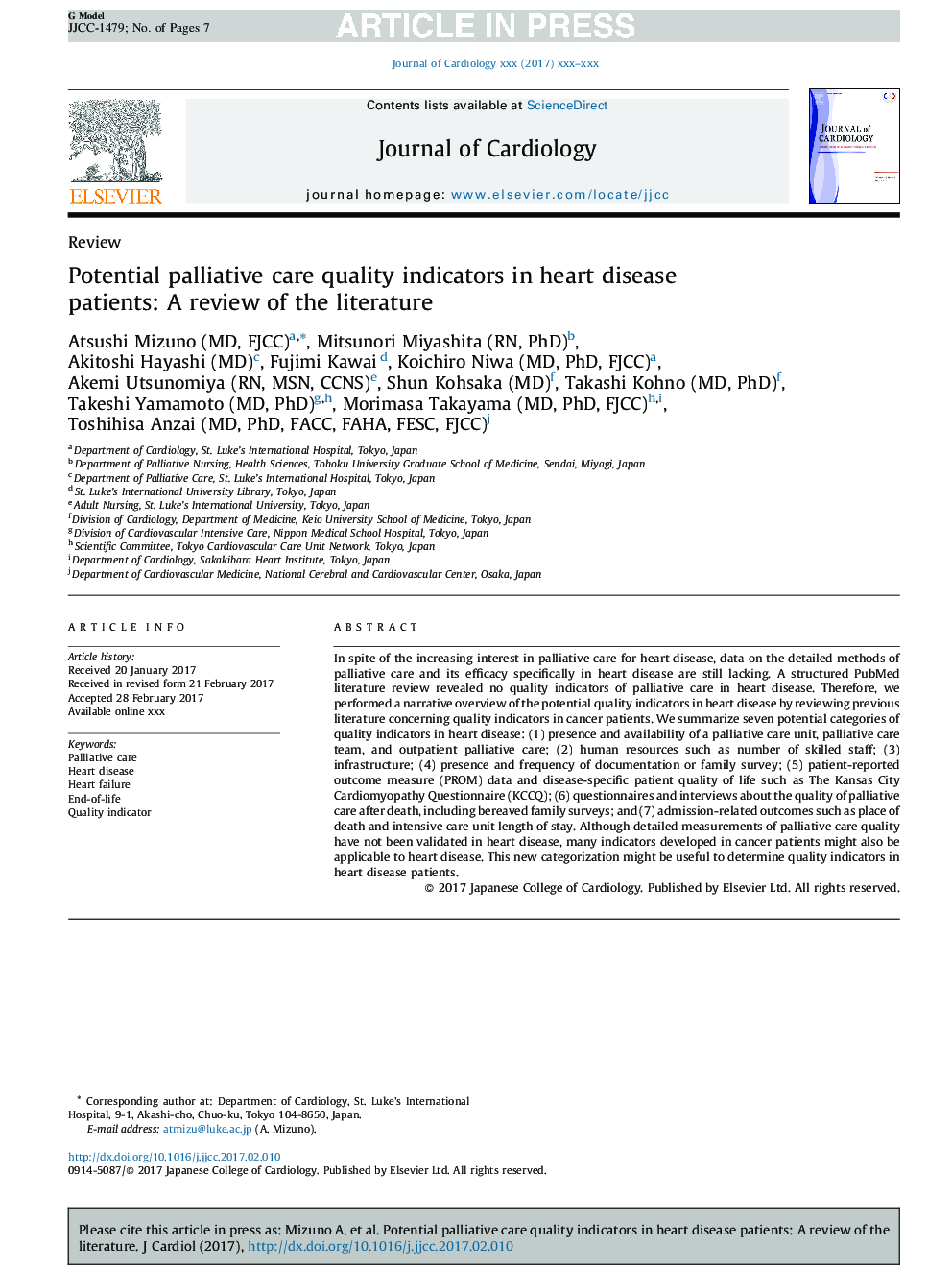| Article ID | Journal | Published Year | Pages | File Type |
|---|---|---|---|---|
| 5614602 | Journal of Cardiology | 2017 | 7 Pages |
Abstract
In spite of the increasing interest in palliative care for heart disease, data on the detailed methods of palliative care and its efficacy specifically in heart disease are still lacking. A structured PubMed literature review revealed no quality indicators of palliative care in heart disease. Therefore, we performed a narrative overview of the potential quality indicators in heart disease by reviewing previous literature concerning quality indicators in cancer patients. We summarize seven potential categories of quality indicators in heart disease: (1) presence and availability of a palliative care unit, palliative care team, and outpatient palliative care; (2) human resources such as number of skilled staff; (3) infrastructure; (4) presence and frequency of documentation or family survey; (5) patient-reported outcome measure (PROM) data and disease-specific patient quality of life such as The Kansas City Cardiomyopathy Questionnaire (KCCQ); (6) questionnaires and interviews about the quality of palliative care after death, including bereaved family surveys; and (7) admission-related outcomes such as place of death and intensive care unit length of stay. Although detailed measurements of palliative care quality have not been validated in heart disease, many indicators developed in cancer patients might also be applicable to heart disease. This new categorization might be useful to determine quality indicators in heart disease patients.
Related Topics
Health Sciences
Medicine and Dentistry
Cardiology and Cardiovascular Medicine
Authors
Atsushi MD, FJCC, Mitsunori RN, PhD, Akitoshi MD, Fujimi Kawai, Koichiro MD, PhD, FJCC, Akemi RN, MSN, CCNS, Shun MD, Takashi MD, PhD, Takeshi MD, PhD, Morimasa MD, PhD, FJCC, Toshihisa MD, PhD, FACC, FAHA, FESC, FJCC,
